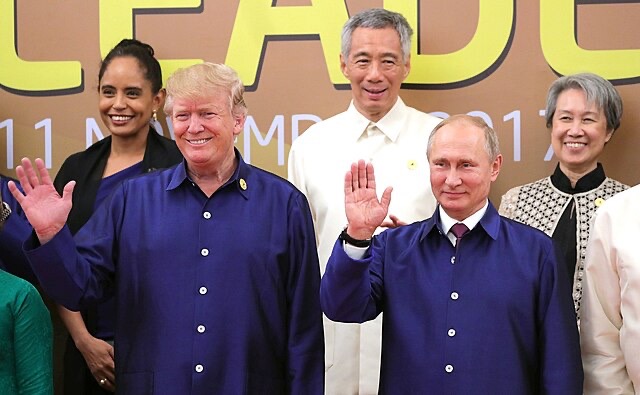Russian forces have seized 10 kilometres of Ukrainian territory in a renewed eastern offensive that military analysts warn could become a serious problem for Kyiv if left unchecked, as President Donald Trump prepares for a crucial summit with Vladimir Putin in Alaska on Friday.
The advance comes as Ukraine denies the attacks amount to a breakthrough, though military bloggers and Western analysts have raised alarm about Russia’s accelerating pace of territorial gains in the Donetsk region, particularly around the strategic city of Pokrovsk.
Russian forces are currently advancing on the eastern front at the fastest pace in a year, with troops “creeping forward” in a summer offensive that has seen Russian soldiers enter key defensive positions for the first time, according to military assessments. The 10km gain represents a significant escalation in Moscow’s grinding campaign.
A very bad scenario,” one Ukrainian commander serving near Pokrovsk told CNN, warning that troops in the adjoining town of Myrnohrad risked “being surrounded.” The officer said Russians had already moved into the nearby village of Rodynske and were on the edges of Biletske, endangering supply lines for Ukrainian troops.
The timing of Russia’s intensified offensive appears calculated, coming just days before Trump’s high-stakes meeting with Putin scheduled for August 15 in Alaska. The US president announced the summit on Friday via Truth Social, stating: “The highly anticipated meeting between myself, as President of the United States of America, and President Vladimir Putin, of Russia, will take place next Friday.
Military analyst Pasi Paroinen from the Finland-based Black Bird Group told ABC News that “the Russians are probably starting to reach the point where they will start to pick up the pace of the offensive.” He noted that what began as a broad Russian push along the 600-mile front has now narrowed into three main axes of attack.
Ukraine’s forces have been forced to make difficult tactical decisions as Russian forces employ their strategy of flanking defensive positions and threatening encirclement. This tactic has already forced Ukrainian retreats from several key positions and is now being applied to pressure defenders in Pokrovsk.
“We held out to the last and lost both cities and people as a result,” the Ukrainian commander said, comparing the current situation to the sieges of Avdiivka and Vuhledar last year, both of which fell to Russian forces after prolonged battles.
Viktor Tregubov, a spokesman for the Khortytsia group of forces active in the area, confirmed to state television on Tuesday that there “is constant pressure all along the entire eastern front.” The admission underscores the strain on Ukrainian forces as they attempt to hold critical defensive hubs.
The fall of Pokrovsk would create multiple crises for Ukraine. The city serves as a crucial road and rail hub, lying on a key highway used by the Ukrainian military to supply other embattled eastern outposts including Kostyantynivka and Chasiv Yar.
Western analysis from the Institute for the Study of War shows Russian forces gained 31 square miles of Ukrainian territory over the past week, though this represents a slowdown from the previous week’s gains of 105 square miles. However, the concentrated nature of the current offensive around key urban centres makes these gains strategically significant.
It seems that Russia is now more inclined to a ceasefire,” Ukrainian President Volodymyr Zelenskyy said in an evening address on Wednesday, adding cautiously: “The pressure on them works. But the main thing is that they do not deceive us in the details.”
Trump’s approaching deadline for Putin to agree to a ceasefire or face new sanctions appears to have prompted some diplomatic movement. The president’s special envoy Steve Witkoff met with Putin in Moscow earlier this week in what Trump described as a “highly productive” meeting, though he later admitted there had been no “breakthrough.
The summit announcement comes after Trump expressed increasing frustration with Putin, shortening his ultimatum from 50 days to just 10-12 days and calling the Russian leader “absolutely crazy” over continued attacks on Ukrainian civilians.
I want to be generous, but we just don’t see any progress being made,” Trump said last month, reflecting his disappointment with Putin’s intransigence.
However, concerns are mounting that Russia may be using the diplomatic engagement to buy time while making crucial battlefield gains. Former Trump national security adviser John Bolton warned CNN that Putin “will have some ideas about how to bring things back in his direction.
Reports suggest US and Russian officials are working toward an agreement that could potentially lock in Russia’s occupation of seized territory. Trump hinted at this possibility on Friday, saying: “We’re actually looking to get some back and some swapping. It’s complicated.”
Ukrainian forces report that despite the pressure in the east, they have managed to stall Russian advances in some sectors, particularly in the Sumy region where Major Oleh Shyriaiev of the 225th Separate Assault Regiment said forward momentum has been “largely arrested.”
The Centre for Strategic and International Studies estimates Russia will likely hit the “stunning and grisly milestone” of one million casualties by summer 2025, highlighting the enormous human cost of Moscow’s territorial gains.
As the Alaska summit approaches, military bloggers warn that Ukraine’s ability to respond to the eastern offensive is being hampered by insufficient Western military aid, with calls growing for additional Patriot air defence systems and long-range missiles.
The next week will prove crucial, with battlefield developments potentially shaping the diplomatic landscape as Trump and Putin prepare to meet for the first time since Russia’s full-scale invasion began.
Follow for more updates on Britannia Daily
Image Credit (Shortened):
Vladimir Putin & Donald Trump at APEC Summit in Da Nang, Vietnam (10 Nov 2017) — by Kremlin.ru, licensed under CC BY 4.0, via Wikimedia Commons.



